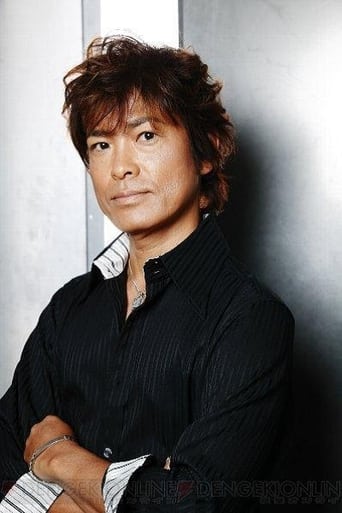verbify
I'm trying to figure out why Miyazaki is the only anime director I really like. I'm starting to think it has to do with his ability to create very convincing characters in very brief scenes, something this movie generally fails at. There are two-line talking frogs in Spirited Away that have more character than some of the main ones here. There are no characters in this movie. Everybody is a thumbnail. And it doesn't add up where every character is an element in a single character, like the fragmentary characters in actual dreams. Everybody feels hollow.That said, the visuals are gorgeous and uniformly memorable, the scene transitions are very fun to watch, and it's all scored very nicely. I enjoyed it. It just wasn't interesting.
MartinHafer
"Paprika" is a film that must have played better and seemed more unique back when it debuted back in 2006. This is because since then, a live-action film, "Inception", has come out and it's obviously strongly inspired by this Japanese anime. It's a film from the late Japanese director, Satoshi Kon, the same guy who brought us "Perfect Blue", "Tokyo Godfathers" and "Millennium Actress". And, like these other films, the plot is pretty weird and clearly not an anime that is intended for kids. "Paprika" has nudity, a weird plot and some violence that make it well worth seeing...for an older audience.The now familiar plot is about a stolen experimental device, the DC Mini. It's designed to allow psychotherapists to enter folks' dreams but a crazy guy is instead using it for ill. So, it's up to one of the therapists, Paprika, to enter folks dreams in order to stop the maniac.The animation is what you'd expect and the film quite good...albeit a bit confusing and very strange. It's really hard to describe and the best way to know more is just to watch this one.
Robert Brogan
Paprika is a kaleidoscopic and phantasmagoric animated thriller, a bewildering ride through dreams mixed with more dreams mixed with waking life. Now for some films, if you do not get what its makers are trying to say, it is lost on you. This is not so with Paprika. This is the kind of film one can watch and find highly entertaining without having much of a clue what it is about. The "Parade of Everything" is quite a sight for lovers of whimsy and fantasy, symbols and the surreal. While there are various weak points to the film, but there is not much point to mentioning them. Why? Well, when something goes for it on a grand scale, as Paprika does, it is better to watch and appreciate what it does right. Beyond the vibrant images, the direction does something special with the choreography, the movement on-screen. You get this wonderful feeling of animation, everything brought to life by imagination and the mind. So if you enjoy crazy dreams or the carnivale, definitely give Paprika a view.
tieman64
"I'm sick of following my dreams. I'm just going to ask them where they're going and then hook up with them later." - Mitch Hedberg Most of Satoshi Kon's animated films ("Perfect Blue", "Millennium Actress" etc) feature non-linear narratives which deftly merge pasts, presents, futures, dreams, fantasies and realities. His final feature, "Paprika", is no different.Though confusing at first glance, peel back its many layers and "Paprika" offers a fairly simple tale. Here we have a repressed psychologist who "enters the dreams" of patients in order to "fix them" and "make them more ordered". To do so, she creates a fantasy heroine called Paprika, a pixie-girl who embodies all the qualities the psychologist wishes she herself possessed. The irony of creating a fantasy to destroy the fantasies of others is lost on the psychologist.Next we have three emasculated men, one clinically obese, one wheelchair bound and one a police officer. The wheelchair bound figure seeks to symbolically "destroy all those who meddle with dreams". Why? Because dreams have become his chief means of achieving happiness, fulfilment and self-actualisation. Burnt by life, he depends heavily on, and retreats further into, his carefully groomed dreamscapes. Needless to say, Kon's "dreams" serve as metaphors for a wide range of "things". They represent everything from internet chat rooms to video games, movies, TV, drugs, sex, prostitutes, food and so on. His "dreams", then, are representative of any all human escapes or coping mechanisms.The cop, meanwhile, enters various dreams as a means of curbing his real life anxieties. Ingeniously, his meetings with Paprika occur in seedy locales, their psychoanalysis sessions resembling sexual liaisons with escorts or call girls. Other characters include a socially withdrawn computer programmer (symbolic of Japan's Hikkomori) and an assistant who acts out various rape fantasies. Virtually all the film's characters are psycho-socially messed up (nods to addictions, masturbation, alienation etc), Kon alluding to a Japan in which modern techno-capitalism has bred all manners of perversions and dysfunctions. The film's dream sequences, most of which feature a mysterious "marching band", are themselves packed with symbolic references to Japanese culture (lots of consumer objects, politicians, religious symbols etc). Elsewhere, billboards, advertisements and the glittery snake-oils of a hyper-consumerist culture bleed incessantly into and out of one another. Every commercial, jingle or pop-song is but another fantasy to be flirted with or discarded. By the film's ends, the dangers of fantasy (the social disconnection, violence, extreme egoism, sexism or misogyny they foster) are acknowledged, but also the emancipatory power of "dreams" as well, be they an individual or communal activity.Aesthetically, "Paprika" is strong, with mind-bending visuals and a memorable score. This being a Japanese animation, there's the obligatory tentacle-rape sequence, a bizarre fetish which goes all the way back to Hokusai's "The Dream of the Fisherman's Wife", and perhaps further. "Paprika's" climax is somewhat derivative, with its generic light-shows and gigantic apparitions, but it's nevertheless Satoshi Kon's strongest feature since "Perfect Blue". See "Existenz", "The Girl Who Leapt Through Time", "The Sky Crawlers", Sang-ho Yeon's "The King of Pigs" and "Demonlover".8/10 – Worth two viewings.







